Burton's Gems and Opals
Miss Marmalade | Vintage 1930's 14kt Virgin Valley Fire Opal & Diamond Bracelet
Miss Marmalade | Vintage 1930's 14kt Virgin Valley Fire Opal & Diamond Bracelet
Couldn't load pickup availability
Meet Miss Marmalade,
Virgin Valley Opal Set in a 1930's White Gold Diamond Watch Converted to a Bracelet
An elegant white gold and diamond Virgin Valley fire opal bracelet that used to be a vintage 1930's watch. The watch came to us broken in an estate buy, and we decided it would be a shame to scrap such intricate craftsmanship. Instead, we completely refurbished the piece, removed the broken watch and movement, and set a hand-cut American opal. Virgin Valley material stable enough for jewelry is incredibly rare. Virgin Valley fire opal is a variety of opalized wood; the wood matrix can be seen on the side of the stone.
The Center Stone: Virgin Valley Opal, solid
- origin: Virgin Valley, Nevada, United States
- brightness of color: 5 of 5
- stone diameter: 10.6mm
- round cabochon cut
- parabolic pattern
The Side Stones: Diamond
- 24 single cuts
- approximate total carat weight: 0.35ct
- average diamond clarity: SI
- average diamond: G-H-I
The Setting: Vintage Watch Repurposed Into a Bracelet
- 14kt white gold, solid
- approximate length: 6.5 inches
- gram weight: 11.97 grams
- circa 1930's
- repurposed in USA
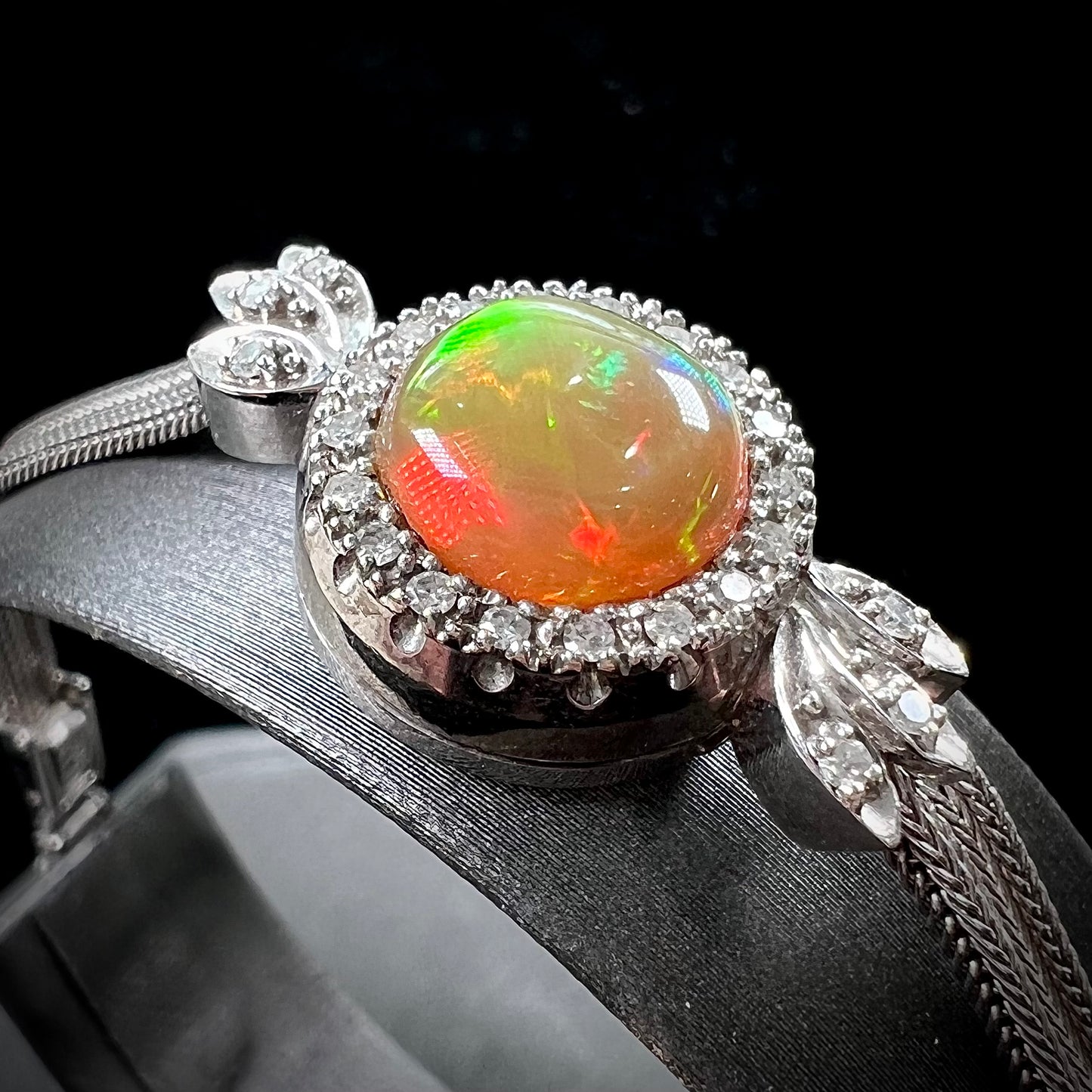
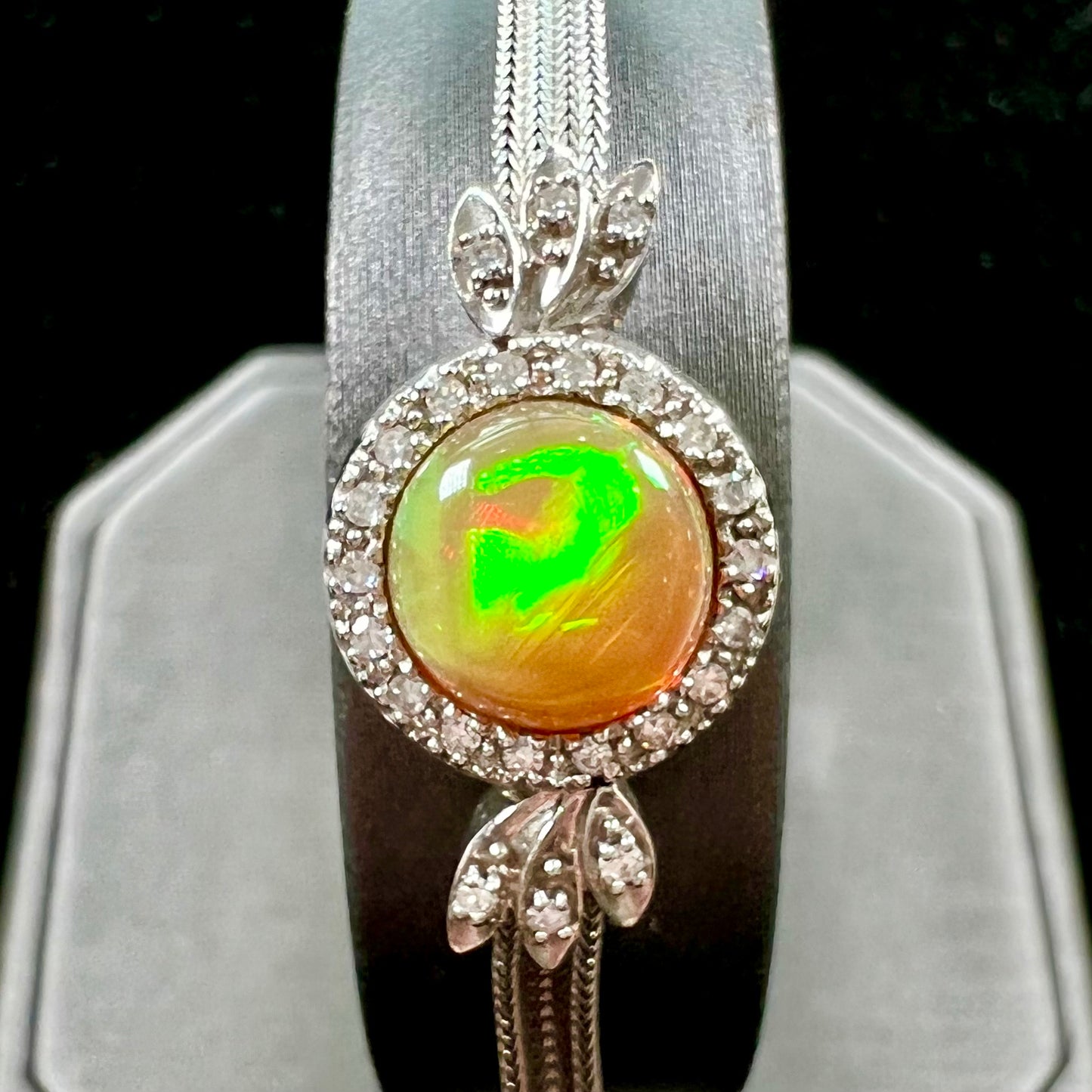
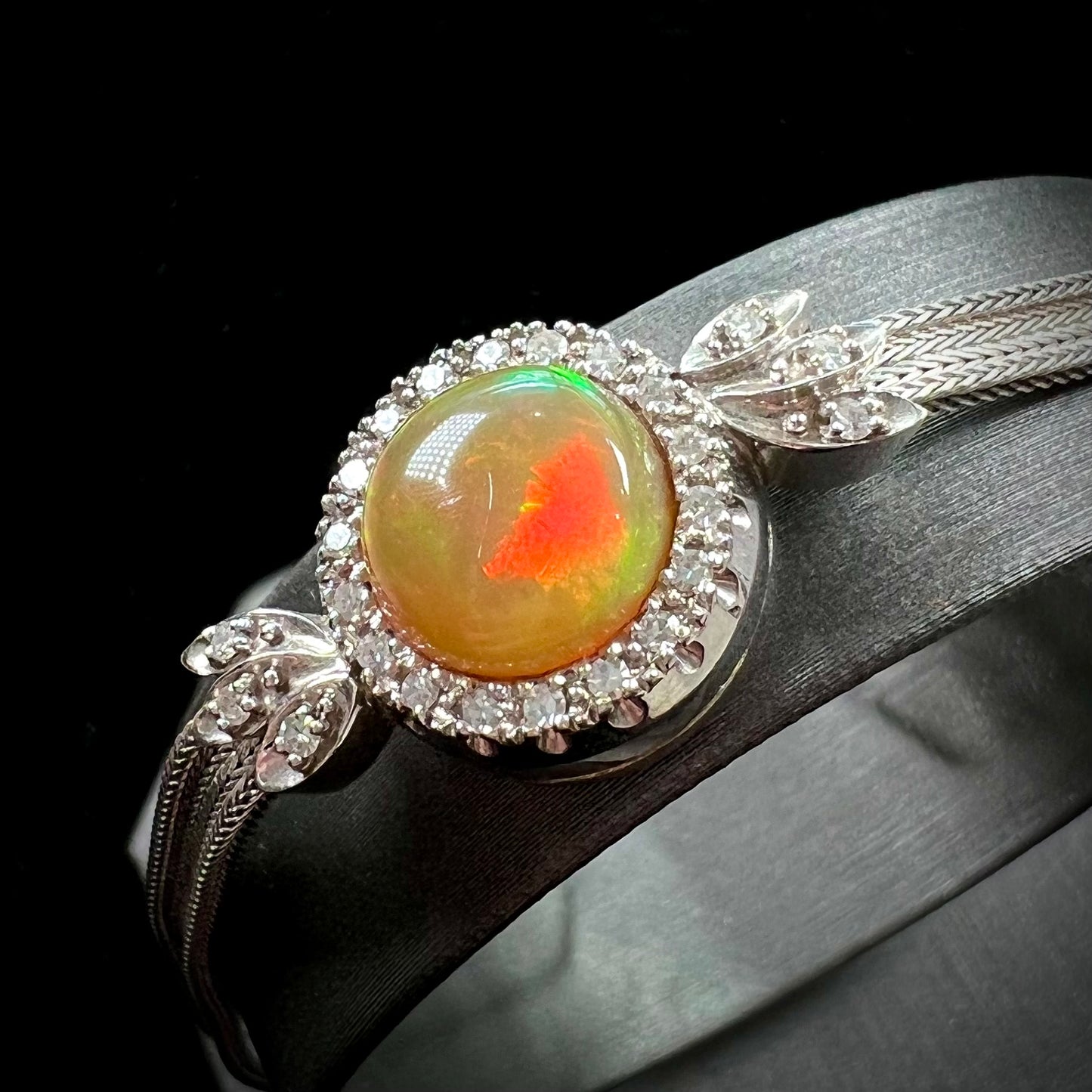
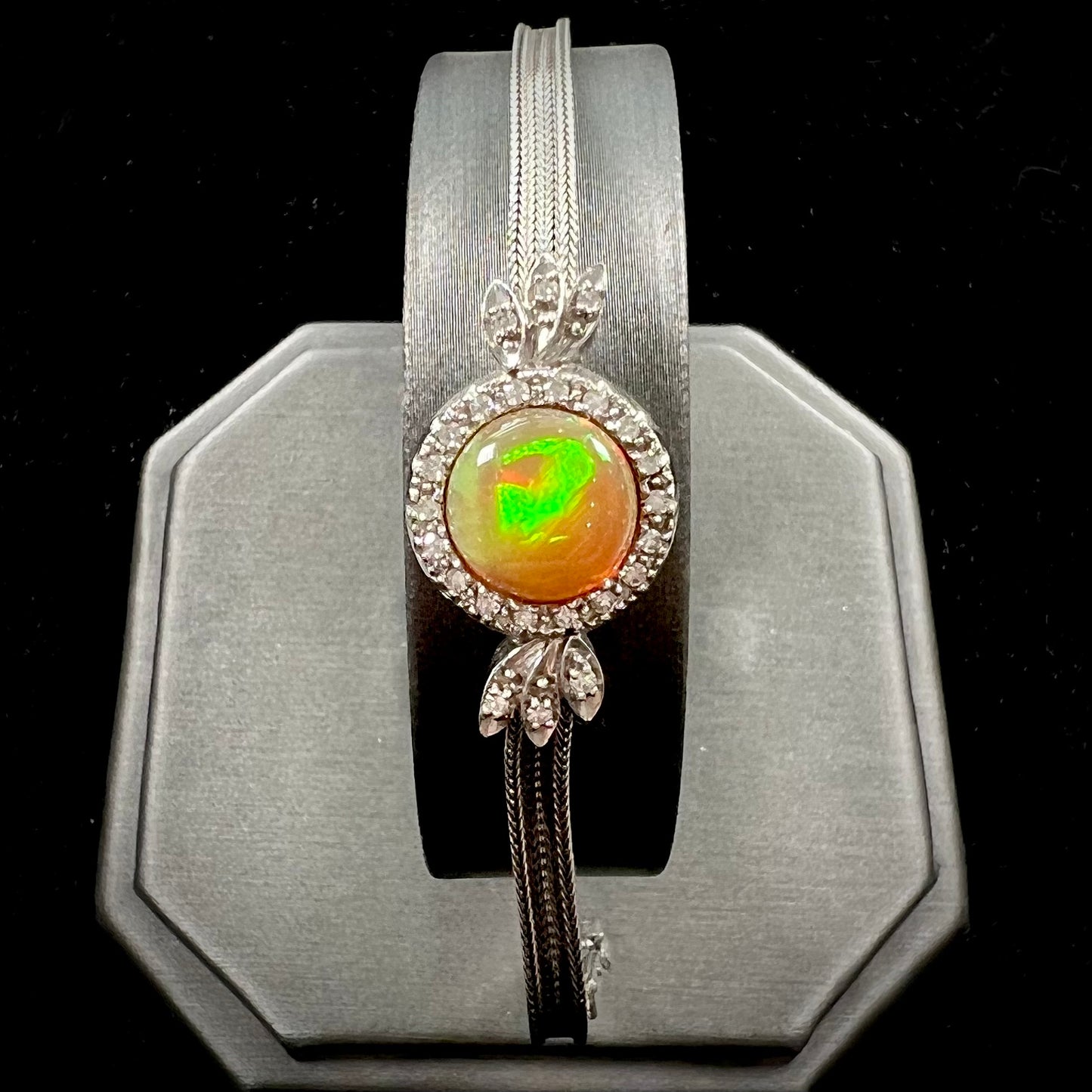
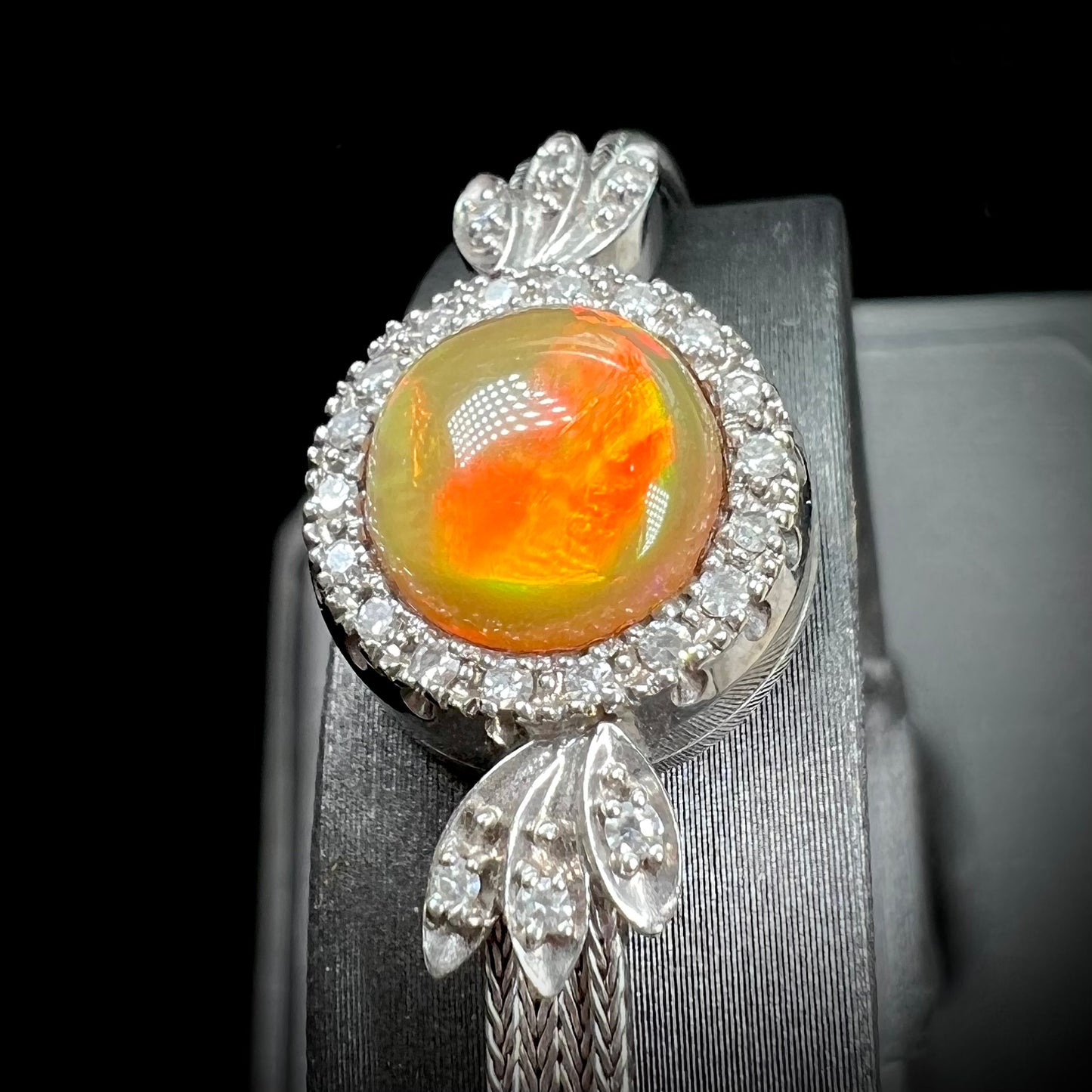
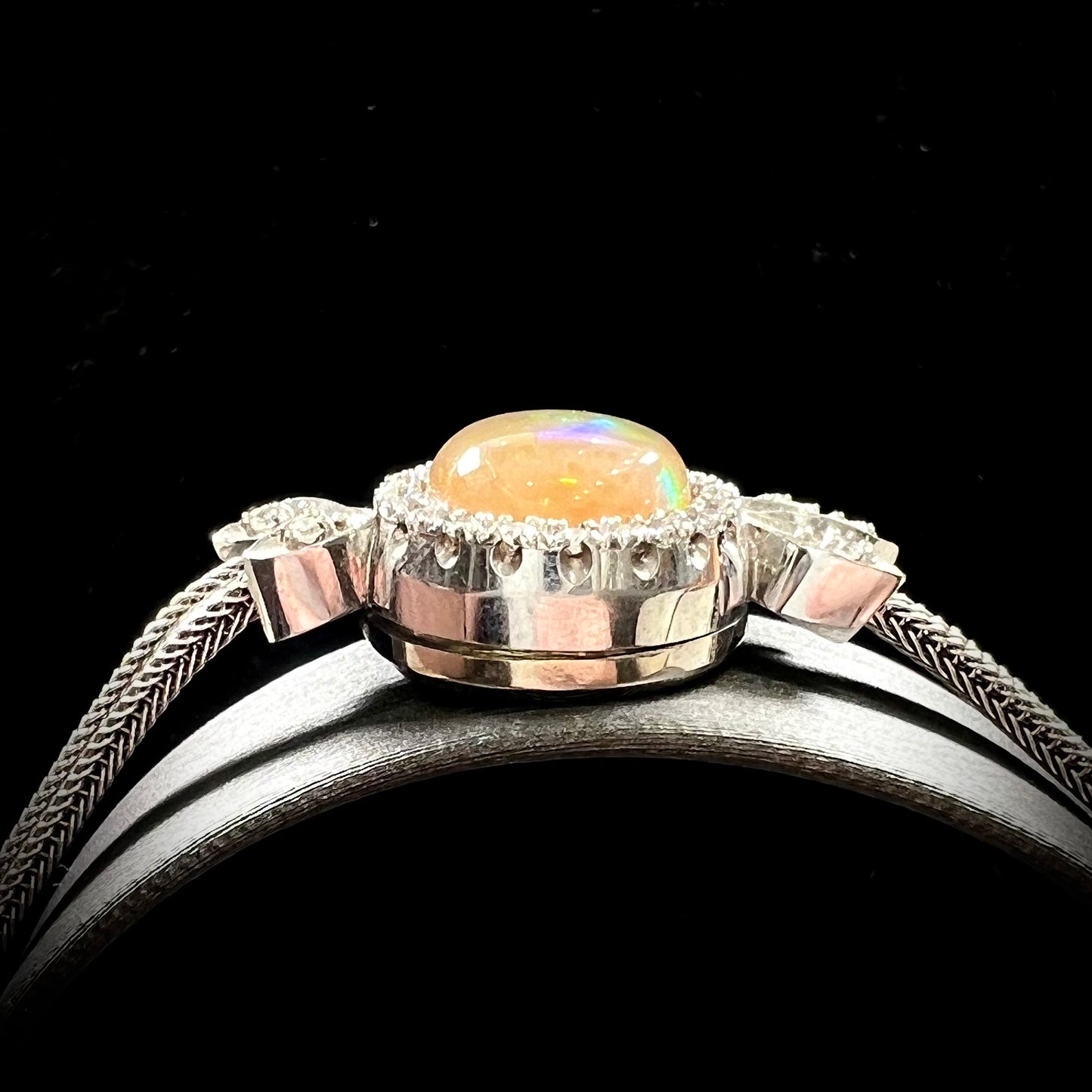

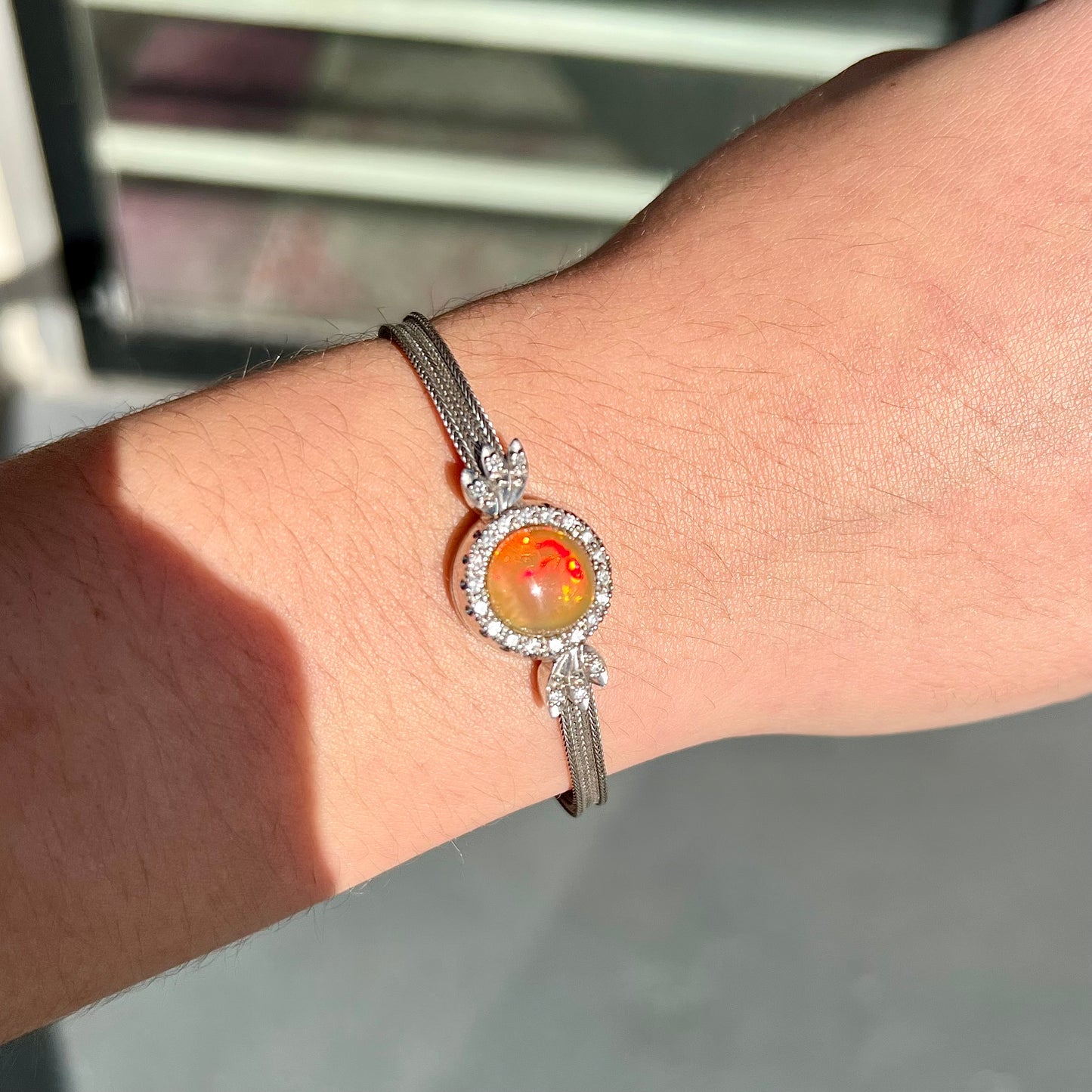
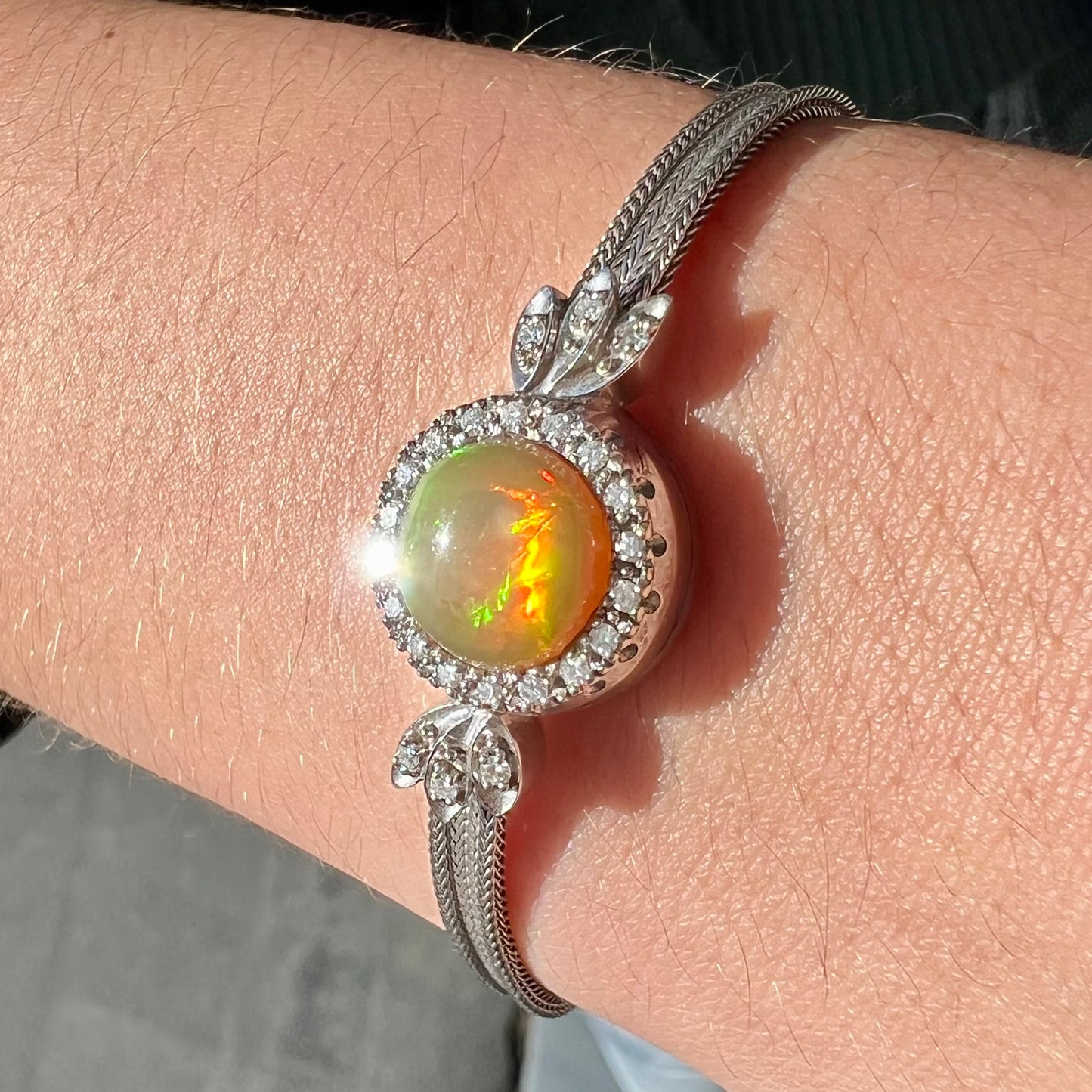

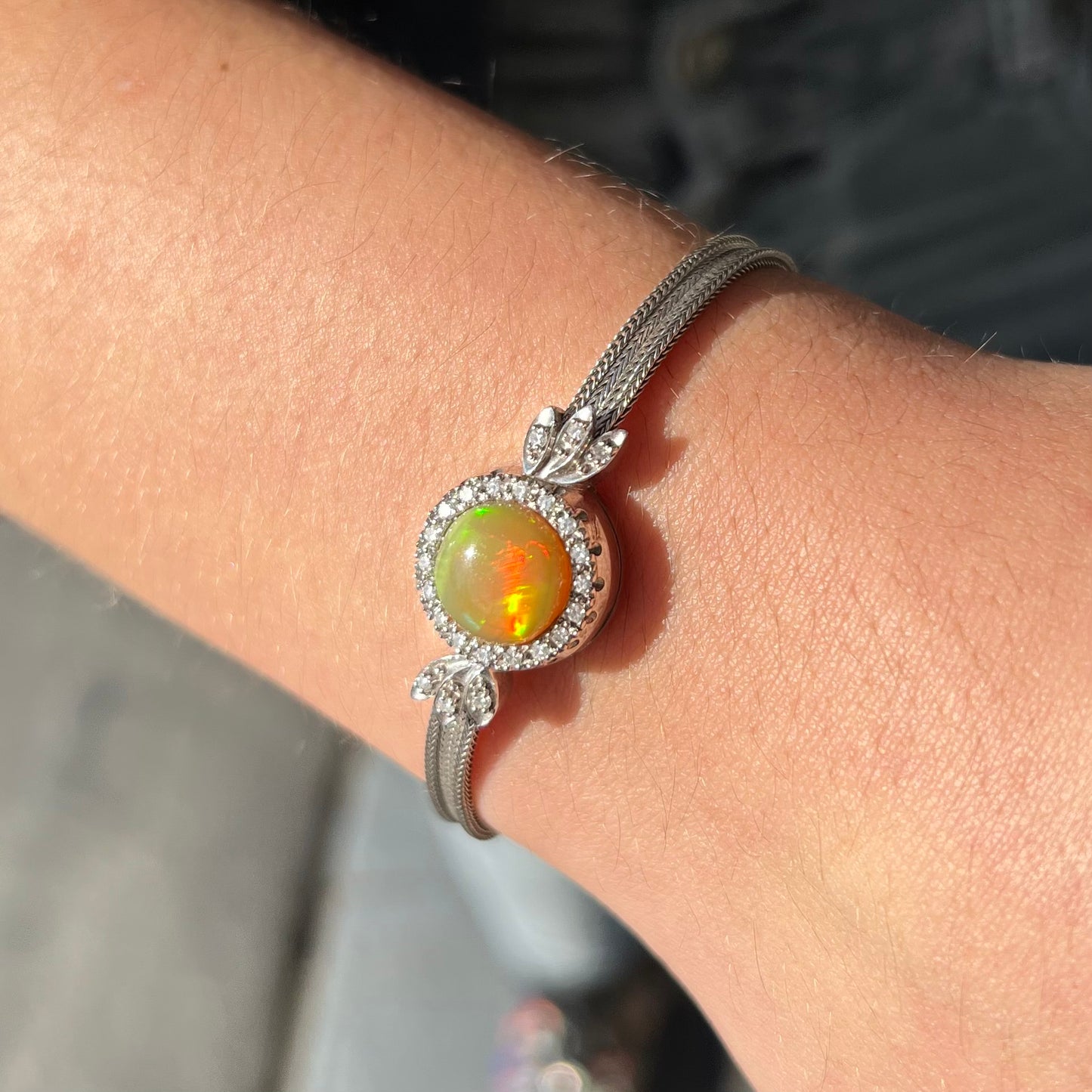
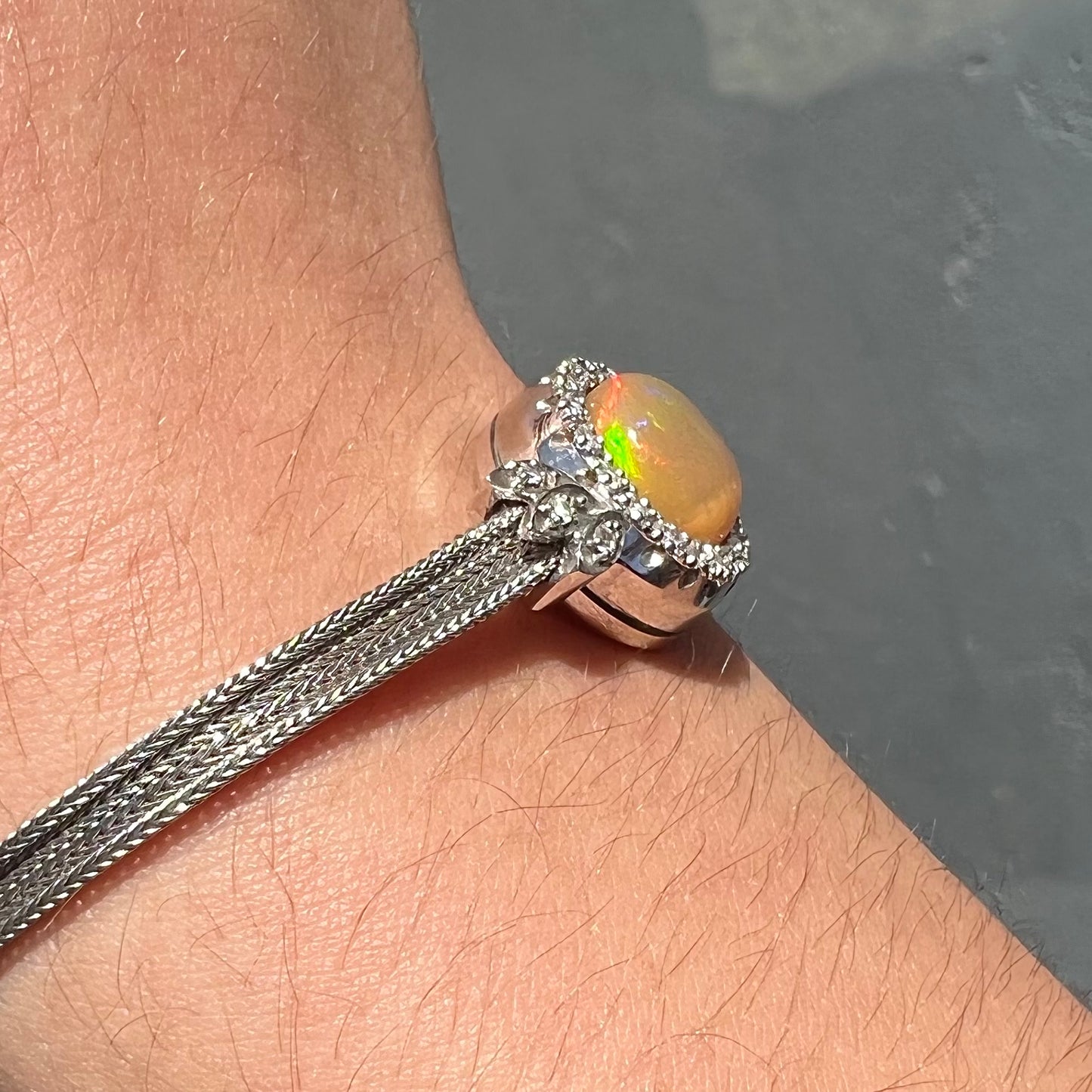

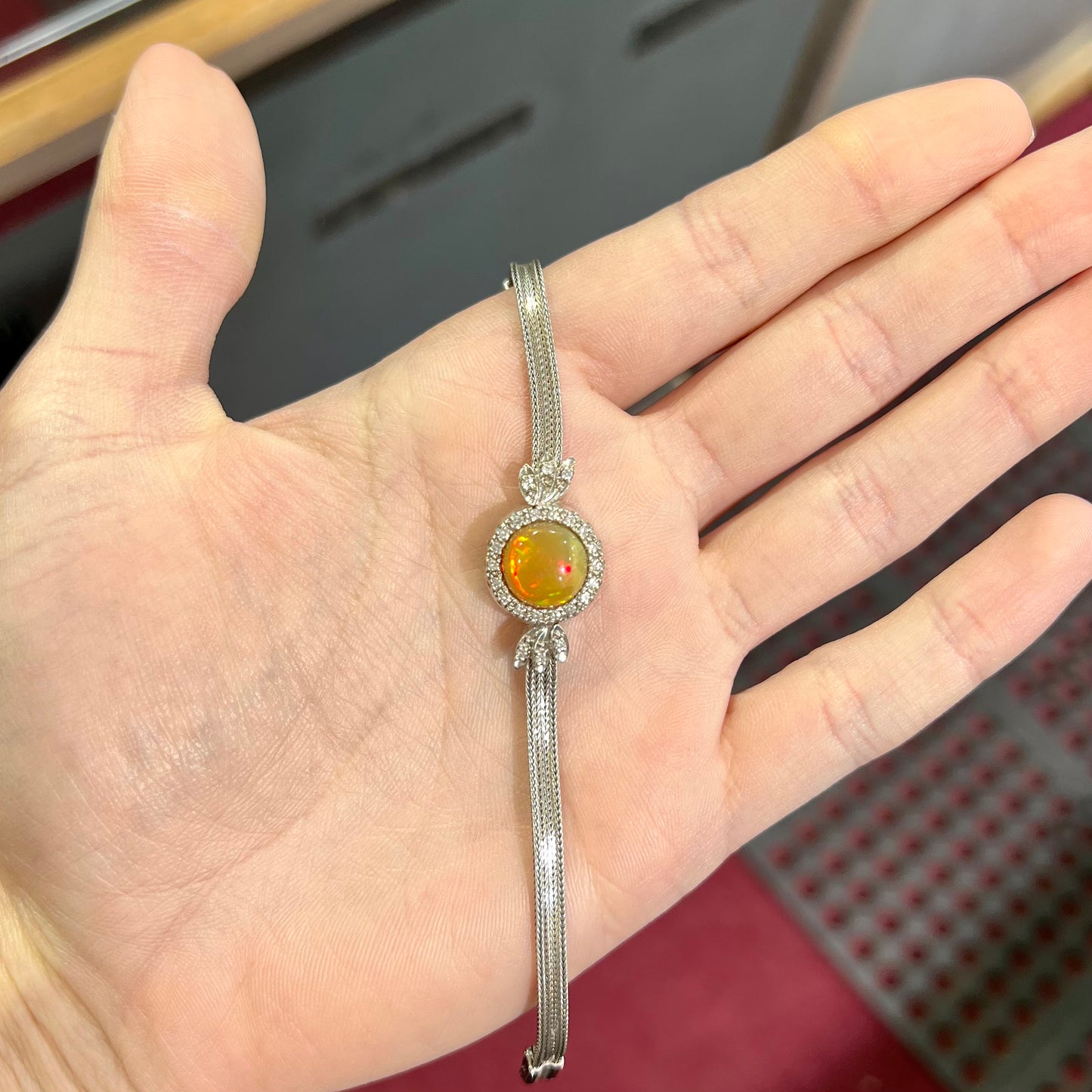

Collapsible content
About Opal
While many believe opal to come only in a traditional white hue, this common misconception cannot be more inaccurate. With over 200 varieties of natural opal discovered so far, the historically referred "Queen of Gems" can come in a wide variety of colors- before the stone's famous "play of color" rainbow effect is even taken into consideration. Over 90% of the world's opal is produced in Australia with other well-known deposits located in Mexico, Ethiopia, Brazil, and the United States.
Chemically, opal is an integrated combination of water and silica. Water content in opal can range from 3% to 21% by weight, with average jewelry material ranging between 6% and 10%. Because of this, it is advised to store your opal jewelry with care; safes and bank vaults can be notoriously dry. We suggest storing opal in an airtight container along with a piece of water-moistened cotton when dry storage conditions are anticipated. Some varieties are more resilient to harsh conditions than others. It is safe to clean solid opal jewelry with warm water, mild soap, and a soft-bristled toothbrush. Avoid chemicals, harsh abrasives, and ultrasonic cleaners.
Shipping, Handling, & Inventory
Your order will be processed and shipped within 4 business days. All shipments are insured by the United States Postal Service, and most orders of $500 or more will require signature confirmation upon delivery.
While we work hard to present our online customers with accurate inventory availability, we reserve the right to cancel and refund a sale if the item is sold somewhere else first.
Wanna Closer Look?
Don't be shy! We're always happy to provide additional photos and videos any time. Just shoot us a quick message, and we'll get back to you.
More Opal Jewelry
-
Example product title
Regular price $4,900.00 USDRegular priceUnit price / per$4,900.00 USDSale price $4,900.00 USD -
Example product title
Regular price $4,900.00 USDRegular priceUnit price / per$4,900.00 USDSale price $4,900.00 USD -
Example product title
Regular price $4,900.00 USDRegular priceUnit price / per$4,900.00 USDSale price $4,900.00 USD -
Example product title
Regular price $4,900.00 USDRegular priceUnit price / per$4,900.00 USDSale price $4,900.00 USD















